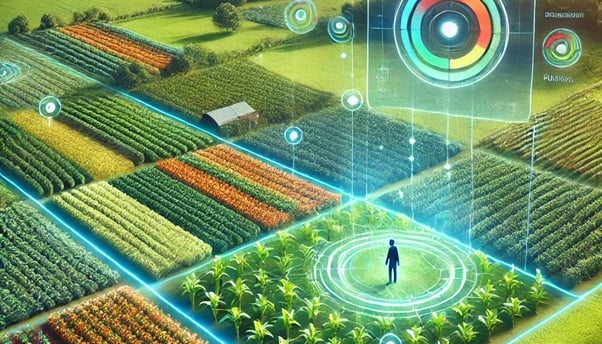The Application of Retrieval-Augmented Generation in Agriculture
Discover how generative AI is transforming agriculture! In "The Application of Retrieval-Augmented Generation (RAG) in Agriculture," we will explore how retrieval augmented generation (RAG) can provide farmers an advice based on local dynamics. From soil profiles to weather patterns, RAG can empower farmers to enhance productivity and sustainability. Join us to uncover the future of farming by RAG-based generative AI!
Dr. Muhammad Shahzad, Assistant Professor, Department of Energy Systems Engineering, UAF. Dr. Muhammad Rizwan Tabassum, Assistant Professor, Department of Energy Systems Engineering, UAF. Dr. Furqan Asghar, Assistant Professor, Department of Energy Systems Engineering, UAF
8/6/20241 min read


Retrieval-Augmented Generation (RAG) is a generative Artificial Intelligence (AI)-based approach that utilises the information retrieval from a specific document and generate text based on that information. RAG-based applications have the scope to transform the agriculture sector by providing consultancy to farmers based entirely on the local dynamics and hence acting as an intelligent advisory in hand.
The dynamics of agriculture vary from region to region due to local variations such as water availability, soil composition, climate, and pest diversity. For instance, the same crop may require different care in one region compared to another. At first, developing AI-based agriculture advisory seems not to be robust due to such hefty requirement and unavailability of data. But, thanks to RAG, with the availability of open-source AI models, RAG can address this complexity by using a document that would contain comprehensive details about the complete local dynamics. In order to have a robust result, such a document might must include at least the following information:
Soil profile: Nutrient content, pH levels, and texture.
Water requirements: Availability, irrigation methods in practice locally, and water conservation techniques.
Weather patterns: Seasonal changes, rainfall, and temperature variations.
Pesticides and fertilizers: Recommended local brands, application rates, and safety guidelines.
Climate considerations: Long-term patterns affecting crop selection and planting schedules.
By using the localized information, a RAG-based AI system can generate advice for farmers just like an agriculture expert in the region. For instance, it can guide them on optimal planting times, suitable fertilizers available in the local market, and/or pest control advice based on their specific regional conditions.
Furthermore, we can make such application multilingual for it to be accessible for farmers who speak different languages especially in rural areas. By providing advice in their local language, the RAG-based system can help farmers improve crop quality and production.
In conclusion, the application of RAG in agriculture can be an effective advisory for farmers based on local dynamics. By using localized information and generating recommendations accordingly, RAG has the potential to enhance agricultural productivity and sustainability worldwide.
